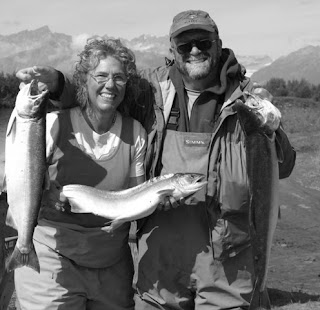Tuesday, December 22, 2009
Sunday, December 6, 2009
Saturday, September 12, 2009
Friday, September 11, 2009
Up in the trees
Sunday, April 19, 2009
Friday, April 17, 2009
Sharing Alaska
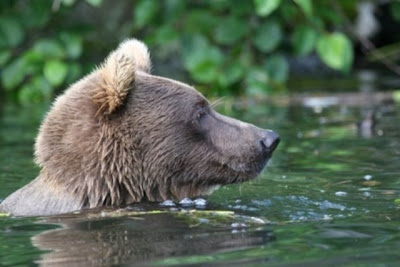



Sunday, April 5, 2009
Practicing Portrait Photography
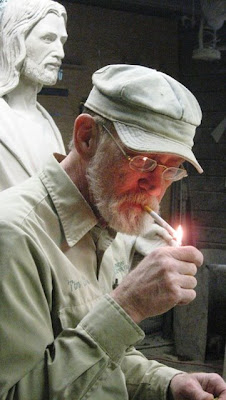
 Timothy Doyle - Master Stone Carver using a pointing system. Some of his recent work can be seen at:
Timothy Doyle - Master Stone Carver using a pointing system. Some of his recent work can be seen at:Shannon Stone Co. - Custom Carvers of Indiana Limestone
"I will work by studying the block of stone, sketching on it with a pencil, and then developing the design from the block. When a precise copy of a model is required, accurate measuring techniques are employed. The "pointing machine", an outgrowth of the Egyptian canons and the old measuring box of the Greeks, is a type of 3D pantograph."
Relax and Enjoy - View Overlooking Lake Michigan
Saturday, March 21, 2009
Dorothea Lange photographs (1895 – 1965)
For the past several months, I have had a strong interest in taking photos of homeless individuals and their surroundings. Because of this newly found interest I have chosen Dorothea Lange’s work to delve into this segment of the assignment. Conventions of photography that can show a heightened sense of reality and can also distort it or misrepresent it. Lange has been quoted as saying: “Photography takes an instant out of time, altering life by holding it still.”
Lange thought of herself as a clinical observer committed to a direct, unmanipulated recording of contemporary events. White Angel Breadline was her first documentary photogragh. To me, what is striking about this photo is the elegant manner in which Lange has balanced the narrative of her image with its formal construction. Displaying a masterful ability to organize complex space, she focuses the viewer’s gaze on just one individual in the crowded pen of unemployed men lining up for food. His hands clutche a tin cup and it appears from the evidence of his worn clothes and disheveled appearance that he has been down and out for some time. Leaning on one of the wooden railings that diagonally crosses the lower quarter of the picture, he faces forward, his back to the rest of the crowd, lost inthought. His eyes are shielded from the camera’s view by the brim of his battered hat, this man emerges from this dark sea of men by virtue of his counter-positioning. His presence is emphasized by the use of light that floats over the the brim of his hat, tin mug, and his clasped hands.
By spotlighting these telling details, and by composing the principal character slightly left of centre and establishing strong tensions between the vertical and diagonal elements, Lange creates an image that is theatrical in presentation and engaging in terms of its content. She achieved a brilliant balance between a collective portrait of humanity and one of an individual. This photo speaks for itself and to its viewer.
 White Angel Breadline (1933) Oakland Museum of California, City of Oakland, Gift of Paul S. Taylor.
White Angel Breadline (1933) Oakland Museum of California, City of Oakland, Gift of Paul S. Taylor.From 1935 to 1943, photographers working for the federal government produced the most enduring images of the Great Depression. Many of the eight thousand photographs taken by the so-called Farm Security Administration (FSA) were distributed by the agency to newspapers and magazines to build support for the New Deal's rural programs. These photographers presented thier rural subjects in ways that middle-class viewers could recognize and sympathize with. Attempting to overcome fears about the disorder provoked the depression, photographers chose poses and points of view that emphasized their subject's dignity, orderliness, and responsibility in the face of hardship.
 Migrant Mother, Nipomo, Calif., March 1936.
Migrant Mother, Nipomo, Calif., March 1936.
(Farm Security Administration, Library of Congress.)
 Mississippi Delta Girl (1936)
Mississippi Delta Girl (1936)

Tractored Out, Childress County, Texas, (1938)
Lange’s objective was not only to document poverty but to show also the agricultural system from which it grew. She used the rhythm of the plowed ruts and ridges and the rows of plants to increase visually the size of the fields in her shots. She showed the impersonality of those enterprises where workers never met the boss and did not know many of their co-workers.


This photo is of a young Japanese boy awaiting evacuation. Lange is in all probability most famous for her work towards exposing the forced evacuation of Japanese-Americans to relocation camps post Pearl Harbor. She captured this misfortune with over 800 photographs which were impounded by the Army. Today, these photographs are available in the National Archives.

Saturday, March 7, 2009
Just for Fun Paint.NET
 This power plant is right on the edge of downtown Indy. The architecture looks so dark and alien when contrasted to the shiny white concrete and glass skyscrapers. The slant of the picture may seem inappropriate; but, I feel it lends to the basic incongruity of the scene.
This power plant is right on the edge of downtown Indy. The architecture looks so dark and alien when contrasted to the shiny white concrete and glass skyscrapers. The slant of the picture may seem inappropriate; but, I feel it lends to the basic incongruity of the scene.As we were leaving Indy I looked into the side rear view mirror and this increadiable scene unfolded before me. Another photo opportunity here is what I saw.

Thursday, March 5, 2009
Enhancing a Photo with Paint.NET
 The orginal photo was taken last week in Indianapolis, IN. Do to the warmer outdoor temperatures there were a lot of people walking the streets and enjoying the early spring day. It was a perfect opportunity to grab the camera and and try out some of my newly learned skills. Such as, framing the shot, rule of thirds, lighting, composition, and to concentrate on the camera settings and features. I tried to master the technique of panning, but that did not work out as well as I had hoped.
The orginal photo was taken last week in Indianapolis, IN. Do to the warmer outdoor temperatures there were a lot of people walking the streets and enjoying the early spring day. It was a perfect opportunity to grab the camera and and try out some of my newly learned skills. Such as, framing the shot, rule of thirds, lighting, composition, and to concentrate on the camera settings and features. I tried to master the technique of panning, but that did not work out as well as I had hoped.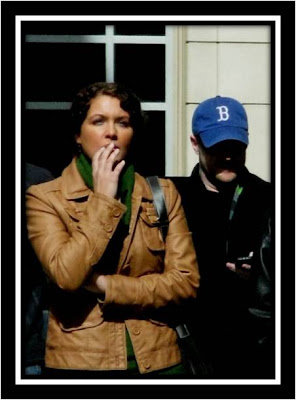 This particular young woman caught my eye so I started photographing her. She was window shopping and unaware of my presence. To me, she looks like a model and I enjoyed watching her interact with her friends as they were walking down the street. I began transposing the orginal photo by cropping the picture to eliminate some of the white space above the subjects. I experimented with many of the features that Paint.NET has to offer. Using the Auto-Level and Brightness/Contrast features added a more appealing look it brings out the natural colors in her face and jacket which I believe allows the viewer to focus on her expression.
This particular young woman caught my eye so I started photographing her. She was window shopping and unaware of my presence. To me, she looks like a model and I enjoyed watching her interact with her friends as they were walking down the street. I began transposing the orginal photo by cropping the picture to eliminate some of the white space above the subjects. I experimented with many of the features that Paint.NET has to offer. Using the Auto-Level and Brightness/Contrast features added a more appealing look it brings out the natural colors in her face and jacket which I believe allows the viewer to focus on her expression. 
Saturday, February 21, 2009
Indoor Photo Without a Flash

For this weeks assignment take a well composed photo and enhance it using Photoshop or PaintNet. I decided to use the fill flash feature which allowed me to adjust the hue and saturation ratio. It lightened the subject and created more shadows. My nephew, Matthew loves to read and most generally is engrossed in a novel.

I tried another feature called Graphic Pen it allowed me to give this photo a new look. I increased the stroke length to 15 and opted to have them come from the right side of the photo. Changing the light/dark composition to 50 which added another dimension giving it more contrast. I really like my new free download tools.

Thursday, February 19, 2009
Be Bold! Using Picasa 3 to Create a New Look

Original Photo - when I snapped this photo my goal was to capture the children (my nephews and nieces) interacting with the sea gulls. I enjoyed experimenting with many of the different features Picasa offers.

Cropped the photo and changed to B&W and adjusted the shadows and lighting.
 Be Bold - I used the saturation feature to show the contrast between the different color schemes.
Be Bold - I used the saturation feature to show the contrast between the different color schemes.
Monday, February 16, 2009
Rule of Thirds

When composing a picture, the rule of thirds can promote most any average photographer to the next level almost instantaneously. The idea is to break down the scene into thirds, both horizontally and vertically. Strong horizontal elements should line up with (or be close to) either the top or bottom division lines in the frame. Similarly, strong vertical elements should line up with the right or left division lines in the frame. [Some digital cameras have grid lines in the viewfinder that can be turned on and off, but with most cameras, you will have to use your trained eye to imagine a grid over the scene and place scene elements accordingly.


Sunday, February 15, 2009
Using Picasa to Enhance My Photo's

The original photo was taken on a cold winter day and the birds nest is weathered. It still holds a nice compositional feeling. The branches of the tree reach out to the corners of the photo forcing the eye to follow. Conversely, it lacks a feeling of life and in the next illustration, I will demonstrate how a tint of color can enhance this photo.
The "graduated tint" feature in Picasa 3 was used to increase the level of "saturation." This put emphasis on the pinks at the bottom of the photo. A tint of olive green was used in the upper right corner. However, I have not yet achieved the desired look that I am seeking for this photo. So, I will continue to strive for a better result and will post the updated version soon.
Cropping For A New Look

The original photo and the subject is not defined.
In China there is a place called Shangri-La, in the northwest of Yunnan province (southern part of China.) Zhongdian County was renamed Shangri-La County in 2001 by Chinese authorities after the fictional land of Shangri-La in the novel “Lost Horizon.” Previously the county was called Zhongdian, among Chinese, and Gyalthang, among Tibetans. The capital of the county is also known as Shangri-La, before 2001 it was named Jiantang Town.
The myth of Shangri-La was born in 1921 with the novel by James Hilton “Lost Horizon.” In his book, Hilton describes a paradisiacal place in the foothills of the Himalayas isolated from the outside world where people lived a harmonious and happy life.
I was able to make several adjustments in Picasa 3 which allowed me to focus m ore on the subject. However, I am not sure how to remove the rain drops from the windshield of the bus? My personal opinion is this photo does not warrant saving. The composition is weak and no matter how hard I tried to enhance it using Picasa 3 - for me; it still is an undesireable photo.
ore on the subject. However, I am not sure how to remove the rain drops from the windshield of the bus? My personal opinion is this photo does not warrant saving. The composition is weak and no matter how hard I tried to enhance it using Picasa 3 - for me; it still is an undesireable photo.
Nevertheless, this assisgment taught me how to crop and change the dynamics of a scene by adding an array of colors. I will continue to practice using this software which allows me to edit, organize, and share pictures over the Web.
Saturday, February 14, 2009
Behind The Lens


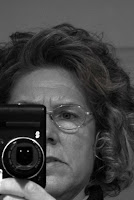 This photo was taken as I was looking at my reflection in the mirror. Picasa 3 was used to illustrate the dynamic features this program offers its user. First of all, as you can see, I cropped the photo and used the enhancing lighting feature. I changed the look of this photo when I turned it into a B&W which I think gives it a depth of field feeling. It takes on a new character by showing the contrast of shadows on my face.
This photo was taken as I was looking at my reflection in the mirror. Picasa 3 was used to illustrate the dynamic features this program offers its user. First of all, as you can see, I cropped the photo and used the enhancing lighting feature. I changed the look of this photo when I turned it into a B&W which I think gives it a depth of field feeling. It takes on a new character by showing the contrast of shadows on my face. 